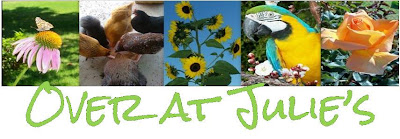Will has decided to garden like the Native American Indians this year, so he is breaking new ground, and has purchased heirloom seeds from Seeds Trust.
Three Sister Gardening is the companion planting of Corn, Beans and Squash or Pumpkins. The Iroquois Indians were gardening in this manner for over 300 years before the first European settlers arrived in America in the early 1600s. If it hadn't been for the help of Iroquois Indians sharing their produce, seeds and farming techniques, the first settlers would have starved!
This vegetable trio, Corn, Beans and Squash, sustained the Native Americans both physically and spiritually. Indian legend tells that the plants were a gift from the gods, always to be grown together, eaten together, and celebrated together.
There are different variations of this type of planting depending on climate and rainfall. The plan Will chose is done in a 10-foot x 10-foot square. There are 3 rows of 5 mounds each, 18-inches across. He added mulch and manure to each mound and dug down about a foot deep.
The eldest sister, Corn, is planted first. She supports the Pole Beans. The Beans produce nitrogen which corn needs to grow. The Squash shades the ground helping to conserve water, provide cover so weeds don't grow, and protects the ears of corn from predators, like raccoons. It is really an ingenious way to grow these 3 wonderful crops!
We are growing an heirloom corn called Candy Mountain Super Sweet Corn (the only heirloom super sweet corn), heirloom Rattlesnake Pole Beans, and heirloom Sugar Pie Pumpkins.
Rattlesnake beans, once established, need very little rain. Their 7 to 8-inch pods are dark green with purple steaks. We can harvest the beans while tender as very sweet snap beans, and also use them as dried beans for soups and stews. They are rich in iron and fiber. I'm looking forward to eating these unique beans both as snap beans and as dried beans!
In the front garden, I am trying a variation of the "Sisters" by planting popcorn in 4-inch deep, 20-inch x 20-inch squares, 12 kernels per square. My popcorn of choice, an heirloom Pueblo Cochiti Popcorn originating from Pueblo, New Mexico. As the popcorn grows I'll fill in the 4-inch depth with soil to support the root system (very important with our high winds during dust storms and monsoon season) Between the squares of popcorn I'm planting heirloom Soleil, a French/filet Yellow bush bean known for its "unparalleled, exquisite taste". Will loves his yellow beans!
Our growing seasons are short and the popcorn I chose takes 90 to 110 days, so-ooo I don't know if this will work for us. I chose corn that is grown in the Southwest desert because it can handle the heat . . . we'll see!
Confession . . . I absolutely love popcorn and think it would be so great to grow my own for eating and also for seed saving. It is so very important to preserve these rare heirloom seeds so they're not lost forever! Cochiti comes in red, yellow, brown, and striped kernels.
(Popcorn) Zea mays ~ domesticated in Mexico by 6,700 B.C. corn is a staple food and has many ritual uses among the Indians. Popcorn is used for Pinole (toasted and ground) and as popped corn. I'm excited about grinding our own corn for Pinole and to make whole-germ cornmeal. It can also be used in ornamental fall decorations.
I'll keep you updated as these experimental gardens begin to grow with photos and comments from . . . Over at Julie's!!!
Have you ever planted a Three Sisters Garden? Would love to hear about it!

No comments:
Post a Comment
Your comments and questions are welcomed . . .